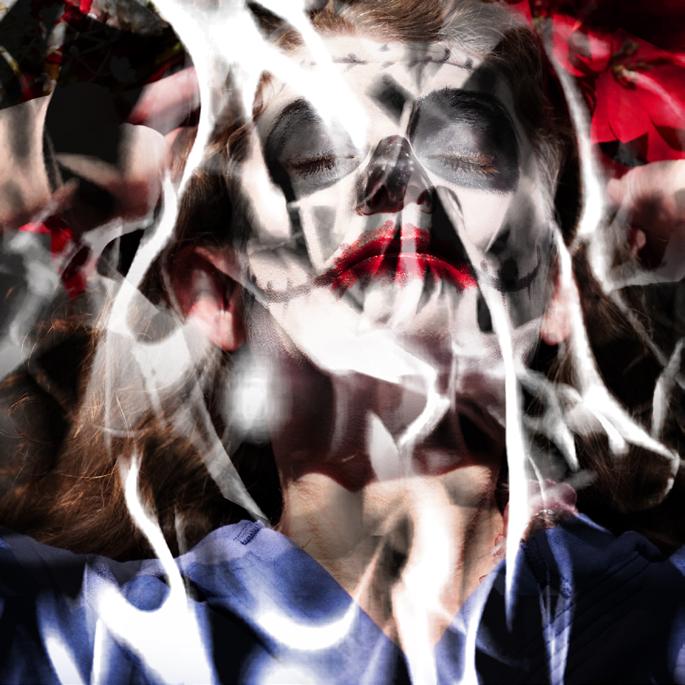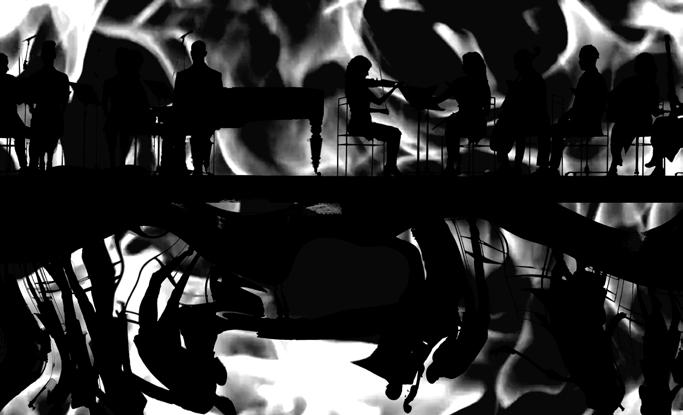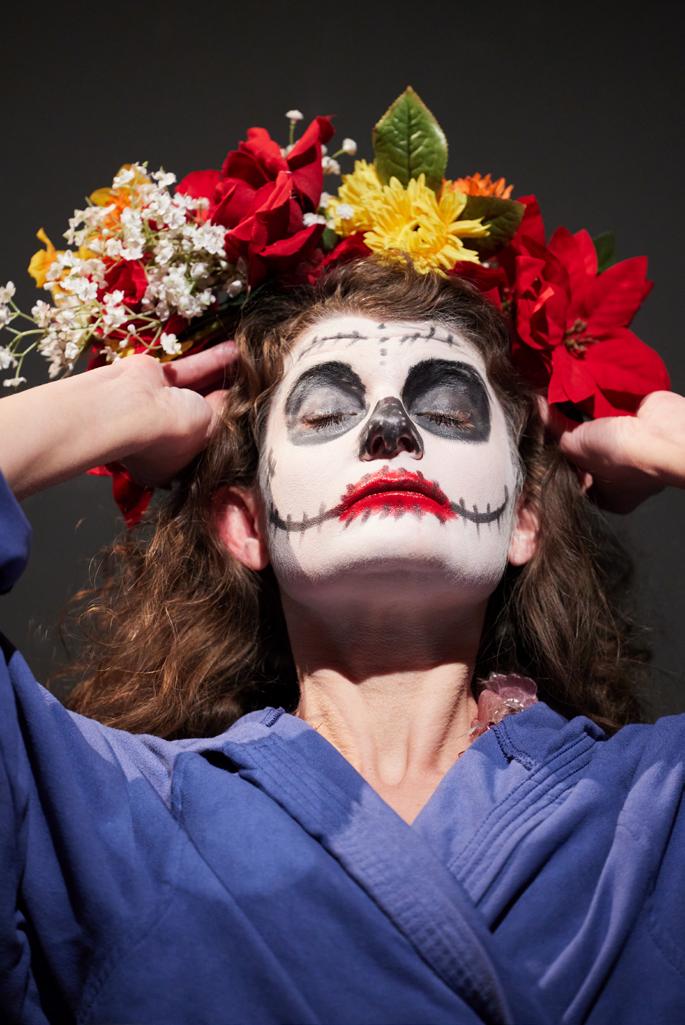
Artus – Goda Gábor társulata
Artus – Company of Gábor Goda Fata morgana – bemutató • premiere
14. ÉS 15. | 19.00
Nemzeti Táncszínház – Nagyterem
National Dance Theatre – Main Hall
In memoriam Melis László
Előadják • Performed by: BAKÓ Tamás, EGYED Bea, LUKÁCS Mihály, MÓZES Zoltán, SZALAY Henrietta
Közreműködik • Featuring: JOBBÁGY Bernadett, KIRÁLY Péter, MAYER Lili, MAYER Zita, TR. SZABÓ György, VÁCZ Péter
Média • Media: HAJDU Gáspár
Videó • Video: LUKÁCS Mihály
Jelmez • Costume: LŐRINCZ Kriszta
Díszlet • Stage set: SEBESTÉNY Ferenc
Fény • Lighting: KOCSIS Gábor
Produkciós asszisztens • Production assistant: FAZEKAS Anna
Kommunikációs munkatárs • Communications officer: NAGY Enikő
Koreográfus • Choreographer: BAKÓ Tamás, EGYED Bea, GODA Gábor
Külön köszönet • Special thanks: JÁRAI Anna, BODÓCZKY Antal
Rendező • Director: GODA Gábor
Az előadás a Liszt Ünnep keretében a Nemzeti Táncszínházzal közös programként, a Müpa szervezésében valósul meg. • This performance of the Liszt Fest is presented by Müpa Budapest as a joint event with the National Dance Theatre.
For the English version see page 3.
Artus: Fata morgana Délibáb. Illúzió. Képzavar. Látszat.
A valóság kontúrjai elmosódnak, ahogy a tűz peremén mozduló testek és árnyékok.
„Civilizált állatok és bukott angyalok szerelméből születtünk. Harcol bennünk a vadak vére és az istenek szelleme. Számkivetett én-létünk keresi önmagát.”
A Fata morgana gyönyörűen lidérces, apokaliptikus látomás a Teljességből önmagát száműző emberről. Elménket és lelkünket a kezdetektől fertőzi egy gyötrő gondolat: az én-tudat szülte elkülönültség, megosztottság és a bűntudat állandó harcba hajszol a világ ellen. Ez lett az örökségünk, és talán a végzetünk is. E szellemi pandémia oly régóta tart, hogy már észre sem vesszük, hisz beleszületünk. A fájdalmas romlásban azonban ott rejlik az átalakulás csírája – egy belső gyógyír újrafelfedezése.
„Az Én nem valaki, hanem valahogyan.”
Az előadás zenei anyaga Melis László (1953–2018) öt meghatározó művéből idéz, a Henoch apokalipsziséből (1997), a Maldoror énekeiből (1984), a Szertartásból (1981), a Mulomedicina Chironisból (1988), valamint az Artus Alvajárók című előadásához komponált zenéből (1990). A Henoch apokalipsziséről így nyilatkozott Melis: „A kantáta szövegének gerincét a címben szereplő Henoch prófétának tulajdonított – Krisztus előtt 200 körül keletkezett – apokrif írás részletei alkotják. (Vannak olyan vélemények, amelyek ennél jóval régebbre datálják egyes részleteit, sőt, a szöveg szerzője is a Teremtés könyvéből ismert ősatyának, Henochnak – Matuzsálem atyjának – mondja magát.) A viszonylag hosszú, több könyvből álló mű igen heterogén, de a szövegekben nemcsak a Jelenések könyvéből ismert apokalipszis látomásai fogalmazódnak meg: szerzője inkább a teremtés elveszíthető teljességét, szépségét ecseteli. A mű eredetileg héber vagy arámi nyelvű; egyetlen teljes fordítását ismerjük etióp szakrális, azaz ge’ez nyelven. Egyrészt ezért szól a kantáta is ezen a nyelven, másrészt az afrikai zenéhez való vonzódás miatt, amely a mai napig is sok helyen tiszta és erőt sugárzó maradt.
A Henoch Bevezető beszédéből kiválasztott néhány bekezdés a teremtett világ csodáiról szól. Ez a szöveg az alapja az első hosszú, négyrészes, etióp nyelvű tételnek. A következő ge’ez tétel szövege több könyv idézeteiből montírozódott össze: az ötrészes forma legjellegzetesebb része az őstörténetből ismert bukott angyalok vezéreinek (hagyomány szerinti) neveit so-
rolja fel az angyalokról szóló könyvből. A Messiás könyvéből vett részletben a bukott angyalok büntetését, de egyben minden igaztalan ember kegyelemvesztését hallhatjuk. Az utolsó etióp nyelvű kétrészes tétel első felének szövege ismét a Messiás könyvéből való: egy derűs képpel jeleníti meg az utolsó napokat, a második fele pedig az igazak megdicsőülését írja le.”
Artus – Goda Gábor társulata
Az Artus emberek, gondolatok, művészeti ágak találkozásának helye. Egyaránt jelenti Goda Gábor 1985-ben alapított független társulatát, a 2000 négyzetméteres, elhagyatott gyárépületben kialakított alkotóműhelyt –az Artus Stúdiót – és az itt alkotó 30 művész kollektíváját, valamint az egyesületet, amely az intézményes hátteret biztosítja mindehhez. Működése során az Artus több mint 100 előadást hozott létre, melyeket 25 országban mutattak be. A kezdetektől fogva szerveznek nemzetközi projekteket, rezidens programokat, koprodukciókat. A Stúdió rendszeres programjai között szerepelnek az Artus társulatának előadásai, vendégelőadások, képzőművészeti kiállítások, zenei és egyéb kulturális események, valamint önismereti és mozgásműhelyek. „A legfontosabb az Artusban az a kreatív energia, amely alkotások létrehozásán túl olyan embert előfeltételez, aki teremtő erővel rendelkezik, és képes – elsősorban a saját életét – alkotó módon irányítani. A kreativitás valójában életenergia.” (Goda Gábor)

Artus:
Fata morgana
A mirage. An illusion. An apparition. The contours of reality are blurred, like bodies and shadows moving on the edge of the fire.
‘We are born from the love of civilized animals and fallen angels. The blood of the beasts and the spirit of the gods fight within us. Our exiled self is in search of itself.’
Fata morgana is a beautifully nightmarish, apocalyptic vision of man, who has exiled himself from Completeness. From the beginning, our minds and souls have been infected with a nagging thought: separation, division and guilt, born from the sense of self, drive one to a constant battle with the world – this is our legacy and perhaps our destiny. This spiritual pandemic has been going on for so long that we don’t even notice it any more as we are born into it. But in the painful ruin lies the seed of transformation, the rediscovery of an inner cure.
‘The Self is not somebody, but somehow.’
The music of the production is taken from five definitive works by László Melis’s (1953–2018), The Apocalypse of Enoch (1997), The Songs of Maldoror (1984), Rite (1981), Mulomedicina Chironis (1988) and music composed for an Artus production, The Sleepwalkers (1990). Said Melis of The Apocalypse of Enoch: ‘The backbone of the lyrics of the cantata is formed by excerpts from an apocryphal writing attributed to the titular prophet Enoch, from around 200 BC. (Some think certain parts date even far further back, and the author actually claims to be Enoch, the patriarch, Methuselah’s father.) This fairly long work, which is comprised of several books, is very heterogeneous, and alongside the apocalyptic visions familiar from the Book of Revelation, there are descriptions of the completeness or beauty of creation, which may be lost. It was originally written in Hebrew or Aramaic, but it has survived in its entirety only in its translation into Ge’ez, or liturgical Ethiopian. This is one of the reasons why it is the language of the cantata, the other being my attraction to African music, which has remained pure and powerful in many areas. The few paragraphs taken from Enoch’s introductory book are about the wonders of the created world. This text is the basis for the first long, four-part movement with Ethiopic lyrics. The lyrics of the next Ge’ez movement is a montage of quotations from several books: the most distinctive section of the five-part form is from the book of fallen angels, enumerating the (traditional)


